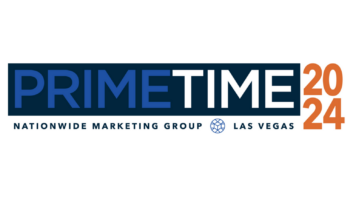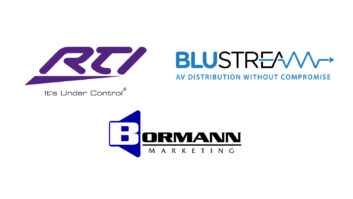TWICE: How do you feel about manufacturers selling directly to consumers over the Internet?
LAWRENCE: It’s been a huge issue for us. We know that every manufacturer out there is champing at the bit to sell direct, in order to take cost out. However, they’ve got the fulfillment issue to contend with, and as long as we can do it better, cheaper and quicker, we can keep that wedge in there. But they all want to do it, they are all ready to do it, and the technology is there. They could pull the trigger tomorrow if they figure out how to fulfill.
CHIARELLI: It has a lot to do with core competencies. Our core competency is engaging and serving the consumer. I have yet to meet a manufacturer who can do that. So I’m not sure that we’ll ever see a big, big play there, even though there might be an effort.
SADOWSKI: Ultimately it’s not really about distribution issues and whether the suppliers choose to sell directly. Ultimately it’s about where the customer chooses to buy. This is a new world, and the customer is now in the driver’s seat with the knowledge base that he has.
Like it or not, the Internet is not owned by the suppliers or the retailers. It’s owned by the people, and they will decide where they want to buy. There’s always going to be a small percentage of people who are very comfortable buying directly from the supplier, and we believe they should be able to do so.
TWICE: How much more leeway will investors give unprofitable e-tailers?
HODGSON: I wouldn’t say that there’s enough evidence yet to suggest that the Internet bubble has burst. But I think there’s clearly a major correction happening now, and where that goes, time will tell.
TWICE: Will e-commerce transactions ever be taxed?
RON SOLOMON [technical database manager, Crutchfield]: I am starting to see a change in sentiment on the e-commerce advisory panel from no tax to “maybe we’ll tax them.” Not that they have the authority to do anything, but they are very influential. When I see Internet companies reporting, “Oh, we have billions of dollars in Internet sales,” the next thing I see are state representatives everywhere going, “Oh my God, we are going to lose all our revenue.”
So, unfortunately, I would not be surprised if in the near future they do start collecting taxes, not only on the Internet but on catalog businesses also. It’s not the outcome I want, but that’s the way I see it. But it won’t be that disastrous because, if it’s simplified, we can all play on a level field and won’t have to collect 30,000 different taxes.
Heiblim: The purpose of a sales tax moratorium was to allow online businesses to grow, so if they come up with a tax plan that is simple and fair, I don’t think it will have any negative effect on this group here. Although the initial period of volume on the Internet may have been driven by the motivation of avoiding sales tax, in the long run it’s based on consumers saying, “I like this experience.”
I think the only way they’re going to be able to get a tax on the Internet is to have a somewhat simpler plan. But I also think pressure is building for that to happen.
TWICE: Do pure play e-tailers need to partner with brick & mortar retailers? Is click & mortar the preferred model?
GILBERT: For us, being able to establish a reliable distribution source is very important. Working in partnership with them has certainly been effective for us. I think that we can do that again. It certainly is something that we’re looking at from a distribution standpoint — partnering in e-commerce and enabling other brick & mortar entities out there. It’s something that we know how to do very well.
SADOWSKI: Click & mortar is one model among many. I think there’s room for a number of different models, and time will tell which are most successful. It’s not a model that 800.com is choosing to pursue currently, but everything changes very, very quickly in this space.
TWICE: E-tailers bore enormous
marketing expenditures last quarter. Was it money well spent?
PAYNE: It’s too early to tell. We’ll be doing a lot of measurement over the weeks and months ahead. But it obviously had a huge impact on our traffic.
I think you’ll see smarter mixes this year. We did a lot of advertising, including partnership ads with Visa and the Postal Service, which were very effective for us. The jury is still out on the singing ads, though. I think they definitely cut through the clutter and were memorable. I don’t know whether the Lawrence Welk imagery will be a long-term campaign, but we’ll be looking at that.
GILBERT: We’re going to see people much more focused on marketing in an ROI perspective. Ultimately we’re going to see a lot of the dot-com companies that are fairly new migrate toward a more traditional financial model and focus more on marketing that can bring in substantial dollars.
Other than for some of the traditional mainline players who have been here for 25 or 50 years, brand is something that you don’t build over four years. Amazon has been able to do it, and very successfully. But just to sustain a brand like that is very costly.
I don’t think ratios of one dollar of marketing to one dollar of revenue are sustainable. Ultimately we’re going to start seeing many dot-com companies focusing more on a revenue-to-marketing model of three to one, maybe even six to one, something more along the lines of a traditional store.
SADOWSKI: I would have expected that marketing to a broader consumer base would have commoditized the sales mix, which is the opposite of what we saw. There was probably a slight deterioration in the average selling price and maybe a little bit lower margin when we went to national advertising and entered an anchor partnership on AOL. Both would tend to bring a more generic, lower-technology customer base, one that’s less consumer electronics-specific. But in fact that wasn’t the case. We continued to achieve a mix of better technology products and higher-margin profits, which we were very pleased with.
JEANS: As we began our national ad campaign in November, we set up a couple of test markets where we ran our spots beyond what the national level was. I’m pleased to report that our business was very responsive to higher levels of advertising in the short term. So that gives us a lot of confidence that creating the right kind of branded advertising presence in traditional media will really help grow this business.
But it’s not a thing that you turn on, decide it’s going to run for three months, and then turn off. This is a long-term strategy that’s fundamental to us building a brand the consumer recognizes as a destination site for consumer electronics.
TWICE: Bob, is AVB finding the net to be a viable distribution channel for white goods?
LAWRENCE: Our business on the net continues to grow and grow and grow, and it’s by far doing a lot more than we anticipated, primarily because of the products we sell. We deal in multiple categories, not only in electronics, but also appliances and furniture.
You look at some of those categories and you say, “Does this lend itself to selling on the net?” Especially performance ratings on things like cooking products — things where you talk about radiant cooking or convection cooking. People see these terms and they don’t know what they mean. It was interesting because our mix coming into the holidays on those types of products, especially cooking products, went up as our average ticket went up, because people were buying more high-end products without seeing them.
TWICE: Dan, how did Crutchfield’s online business compare to catalog sales over the holidays?
HODGSON: Well, it had been growing quite dramatically. In December we saw our online sales grow more than 170 percent over the prior year. But we look at an integrated business strategy. We see the Internet as a communication medium.
I don’t believe that the Internet has created a whole new group of consumers. They’re the same consumers that have been out there all along that we’ve been trying to serve for over 25 years. And we’re using this medium to enhance the business that we’ve been building over that time.
It’s a way we can have more frequent contact, closer contact, but ultimately it’s up to the customer to choose to buy over the telephone or mail in an order. We still get orders faxed in. But certainly the fastest-growing segment of our business is transacted online.













